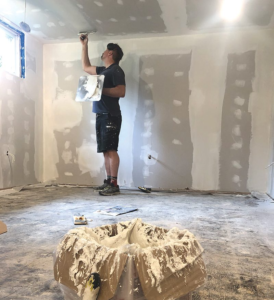Search engine optimization delivers the most cost-effective marketing ROI by attracting targeted leads. SEO helps your pest control business grow by reaching your preferred clients when they are searching for help.
Online directories like Google My Business require accurate NAP information to improve SEO rankings. Updating website content and promoting it on social media increases relevance to visitors and algorithms. Contact Pest Control Marketing now!

A robust SEO strategy allows pest control companies to capture qualified leads and grow their customer base. This is accomplished by using a combination of on-page optimization, off-page optimization, keyword research, and content marketing. By following industry best practices, pest control companies can maximize their digital marketing efforts and gain a competitive advantage over the competition.
The first step in a successful SEO campaign is conducting thorough keyword research. This involves identifying and analyzing keywords with high search volume, low competition, and commercial relevance. The goal is to develop a list of keywords that accurately describe your company’s services and locations. Once the list is complete, the next step is to create content that incorporates these keywords into the site architecture. For example, including a targeted keyword in the H1 tag of each page on your website can improve its ranking in SERPs.
Another important aspect of keyword research is determining the intent of each search. There are two primary types of searches: research intent and transactional intent. Research intent keywords are those that demonstrate a potential interest in your service but do not have a clear need to buy now. For example, a user searching “what are termites?” may be considering hiring a pest control service in the future but is not yet ready to make a purchase. Ideally, you should target these keywords with informative content, like blog posts that provide tips on how to prevent pest infestations or identify early signs of an infestation.
On the other hand, transactional keywords are geared towards those who are actively seeking a pest control service. These keywords are typically searched by people with a clear need to buy now, and are therefore more likely to convert into sales. By targeting these keywords with targeted content, you can position your company as a trusted authority and drive relevant traffic to your website.
On-Page Optimization
A strong digital footprint is increasingly vital for businesses of all kinds, including pest control companies. Search engine optimization (SEO) strategies help improve online visibility and drive organic traffic to your website, which in turn leads to new clients. This guide is aimed at streamlining SEO for pest control companies specifically, providing practical tactics and strategies to maximize your online presence and attract more digital traffic.
The most critical aspect of on-page optimization is using the right keywords in your content and titles. Make sure to include your target keyword in the H1 tag on important pages, such as those describing your services and areas served. Similarly, use your target keyword in the meta description and URL of each page.
Creating relevant, high-quality content is another effective way to improve your website’s SEO ranking. This can be achieved by writing blogs or articles that address common concerns, questions, and challenges your audience may have regarding pest control. Adding videos that showcase effective pest removal methods or before-and-after photos of pest eradication also positions you as an expert in the industry and builds trust with prospective customers.
It is important to regularly monitor the performance of your on-page SEO strategy. Tools like Google’s PageSpeed Insights and GTmetrix allow you to see how well your website is performing, and identify any areas that could be improved. It is also a good idea to optimize your website’s loading speed by compressing images, leveraging CSS/JavaScript cache, and enabling browser caching.
Lastly, it is essential to build your brand through social media and local partnerships to improve your pest control company’s visibility online. This can be done by contributing guest posts to reputable websites in the industry and establishing collaborations with local businesses and organizations.
Off-Page Optimization
Unlike on-page SEO that focuses on optimizing elements within your own website, off-page optimization involves ranking factors that you can’t control. This is where external links and social media profiles come into play. Using these methods can boost your search engine rankings through endorsements from other websites, and bolster your authority as a trusted source of information by bringing in more traffic.
One of the most important off-page SEO techniques for pest control companies is creating content that educates and informs potential clients about common issues. For example, writing comprehensive blog posts about effective DIY pest control methods and providing helpful tips for your clients can improve your chances of appearing among the top results when they search for “termite treatment near me.”
Another way to boost your off-page SEO is through link building. This involves establishing partnerships with other websites and blogs in your industry and sharing valuable content that benefits both parties. Link building can also improve your chances of getting featured in online directories and listings, which often carry a lot of weight with Google rankings.
Finally, having active social media accounts can help improve your off-page SEO by attracting more visitors and increasing the visibility of your website. Creating and maintaining profile pages on popular platforms like Facebook, Twitter, and Instagram can help increase brand awareness, establish credibility, and encourage more people to visit your website.
With the ever-changing landscape of online search behavior, keeping up with the latest in SEO strategies is essential for any business. A dedicated SEO team can help you navigate these changes and optimize your online presence to maximize your search engine performance.
Link Building
SEO is a multifaceted approach to increasing the visibility and authority of your business’s website and online content. It’s about structuring and presenting valuable content in a way that aligns with what users are searching for. It requires a combination of techniques to take advantage of Google algorithms, increase traffic and connect with customers.
For pest control businesses, SEO is crucial because it allows your business to reach potential customers at the exact moment they are looking for services like termite treatment or bed bug removal. This is unlike other marketing strategies, such as billboards or newspaper ads, which can reach anyone at any time.
A strong pest control SEO campaign starts with a comprehensive website that ranks well in search results. It then incorporates a variety of off-page optimization techniques to maximize visibility and connect with local customers. This includes optimizing your Google My Business listing, performing keyword research, creating and optimizing relevant content, enhancing images, and building backlinks.
Technical SEO tactics, such as ensuring that your website loads quickly, improves sitemap and site structure, and implements schema markup can also help boost your search rankings. You can also generate leads by registering your business with online directories and citation platforms. Partnering with local businesses, leagues, or community events that are relevant to your business helps establish brand visibility and can lead to mentions or backlinks from these sources.
Keywords play an important role in your ranking, but the quality of your content is also a significant factor. Publish authoritative, helpful content that answers questions your target market may be asking, or share stories of challenging infestations that you have successfully treated. Engaging with your audience on social media also builds trust and can drive organic traffic to your website.
Content Marketing
Creating unique, valuable content and sharing it on relevant social media platforms establishes pest control companies as experts in the field. Posting helpful tips for preventing pest infestations and showcasing satisfied client testimonials on social media encourages users to share and link to the content, boosting organic visibility in search engines.
Invest in professional photography and videography to showcase pest eradication successes, project professionalism, and inspire prospective clients. Posting visual content like before-and-after photos and videos on social media helps to generate leads and converts visitors into customers. Incorporating how-to guides on preventing pest infestations and eliminating common household pests positions Pest Control SEO specialists as knowledgeable, authoritative resources, and inspires shared links and social mentions, further boosting rankings.
Keyword research tools help pest control specialists identify high-volume, low-competition keywords that align with what people search for when hiring their services. Optimizing website content with these terms, incorporating them into the site architecture, and writing unique meta titles and descriptions helps to establish brands as authorities in their fields.
Local search optimizations, such as verifying NAP information on directory sites and enhancing geo-targeted landing pages, help to boost organic visibility in geographic search results. Generating reviews and showcasing positive customer experiences on review platforms like Thumbtack, Houzz, Angi, and HomeAdvisor can also boost local visibility, bolstering brand credibility with search engines and prospective customers alike.
Behind-the-scenes technical SEO practices, such as ensuring that websites load quickly, enhance user experience and positively impact rankings. By minimizing server response time, compressing images, and leveraging caching technologies, pest control companies can ensure that their digital doors open quickly for both bots and humans. A mobile-optimized website is critical to attracting and converting mobile traffic, too.

